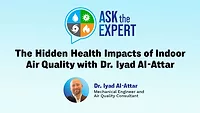The Hidden Health Hazard

Buildings constructed or renovated before the 1980’s are prime candidates for restoration, but a hidden health hazard may be lurking. This dangerous chemical is known to cause a variety of adverse health effects, including cancer, and can easily be unearthed during renovations and repairs.
From the 1950s to 1978, when their use was banned in the United States, polychlorinated biphenyls (PCBs) were used to add strength and flexibility to an important, but easily overlooked, building material: caulk. Caulk is usually used in precisely the part of the building most likely to experience high rates of wear and tear over the years: windows and door frames. The EPA has adopted strict health, safety, environmental and regulatory requirements for the management of PCBs, including those in caulk and other building materials, under the Toxic Substances Control Act (TSCA).
With a lifespan of twenty to forty years, caulk containing PCBs installed prior to 1978 is most likely now due for replacement. More importantly, caulk that is peeling, brittle, cracking or deteriorating visibly has the highest potential for release of PCBs into the air, and is something for which restoration and remediation professionals should be on the look-out.
In addition to potentially causing cancer, the presence of PCBs can adversely affect one’s immune, endocrine, reproductive and nervous systems. To ensure the safety of workers and building occupants, and to adhere to the EPA’s regulations, it is important to understand the dangers of PCB-containing caulk and how to determine whether your site is at-risk, when to request PCB testing, and the short- and long-term solutions for safely removing it.

PCB Warning Signs
The first step in finding out whether the site may be at risk of PCB exposure is to confirm with the facility manager the age of the structure and timeframe of any past renovations or repairs. Don’t forget to consider that portions of the building may have been constructed or renovated during different periods of time. Take these steps to determine whether your facility or job site may be at risk:- Confirm whether the building was built or renovated between 1950 and 1980. If so, the chances that the facility contains PCB-affected caulk are high.
- Determine when major renovation, construction or addition projects took place.
- Inspect the interior and exterior of the building. Consider that caulk is used in a variety of places throughout the building – windows, door frames, masonry columns, stairways, elevator shafts, exterior joints, and where buildings meet the ground. It is also possible that PCBs have impacted the ground surrounding a building (particularly under the affected windows), including soil or paved areas.
- Identify and make note of caulk that is peeling, brittle, cracking or deteriorating visibly.

Testing for PCBs
PCBs in caulk may be regulated under federal (TSCA), state and local regulations. If materials containing PCBs are found in or surrounding a building, they must be properly tested and thoroughly removed and disposed of by a qualified environmental services company.Under no circumstances should workers attempt to remove the hazardous materials themselves. Consider consulting an environmental services firm to discuss the following options to ensure the construction site is properly evaluated for the presence of PCBs:
- Testing the caulk: Samples of chipping or flaking caulk should be sent to a certified laboratory for analysis to determine whether PCBs are present and what their concentrations are.
- Testing indoor air: Air in the building should be sampled and analyzed to determine if PCBs are present and are at levels that exceed EPA’s safety thresholds.
- Testing surrounding materials: PCBs in caulk can affect the building materials it surrounds, like brick, concrete or wood. To ensure these materials do not contain PCBs, they should be tested, specifically before embarking on renovation projects. Soil beneath PCB caulk-containing building materials should also be sampled and tested to determine whether it has been impacted by PCBs in chipping or flaking caulk.
These are not long-term solutions, however, and discussions with the facility manager to hire a professional firm to remove the caulk should take place.
When contracting a firm to remove PCB-affected caulk from the building, consider these criteria:
- Conduct research to identify an experienced environmental services firm that will guide you through the entire process – from walking you through the EPA’s regulations and consulting on the most cost-effective way to conduct the removal, to ensuring all hazardous waste is properly removed and disposed of with minimal exposure.
- Confirm all hazardous waste will be transported and disposed of in an environmentally sound way, in accordance with all applicable state and federal regulations.
- Ensure that as part of the clean-up, surrounding impacted building materials and soil are tested and removed, as appropriate. To make certain that all hazardous materials are removed from the premises, it’s important for project managers to know that this additional step and care is taken.
- Request that the effectiveness of the cleanup be documented by collection and laboratory analysis of samples from surrounding building materials, soil, and indoor air.
- Request a summary report that describes the initial assessment and subsequent removal, conveys the results of confirmatory environmental sampling and analysis, and documents the proper off-site disposal of all waste.
Looking for a reprint of this article?
From high-res PDFs to custom plaques, order your copy today!




